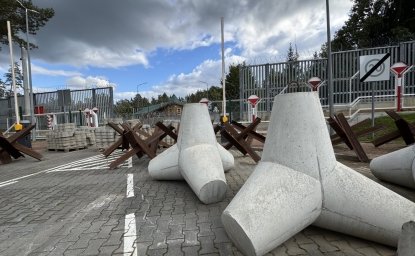World War II was, in the words of historian Paul Fussell, the "worst war ever" in terms of its sheer destructiveness. Over time, however, it became enshrined in American public memory as "the good war," one that was followed by "good occupations" of defeated Axis powers.
Wilson Center Fellow Susan Carruthers , a history professor at Rutgers University-Newark, is exploring how Americans came to understand these post-war exercises in military government.
She started thinking about this project in 2002 when, during the run-up to the Iraq war, President George W. Bush and Secretary of State Condoleezza Rice publicly began making the analogy with post-War Germany and Japan. They proposed that if Germany and Japan could be remade into prosperous, democratic states, then Iraq could similarly be transformed.
"Postwar Germany and Japan did not resemble the Iraq situation," said Carruthers. "Many historians—and CIA analysts—pointed this out. But what went unchallenged was the virtuous aura surrounding the occupations that followed World War II."
Writing a book to be titled, The Good Occupation, Carruthers is researching how Americans have related to the U.S. role as an occupying power. In addition to postwar occupations in Italy, Germany, and Japan, the United States also had forces in South Korea and Austria. How these occupations were viewed "was not just a product of hindsight," she said. "Even during the war, people actively were trying to make the case for the necessity of occupation."
In 1942, the Army launched a School of Military Government at the University of Virginia to train occupation officers in practical skills such as health, finance, and languages as well as cultural sensitivity. The UVA's school closed in 1944, though recently there have been calls for the reopening of such an institution to train officers for the "civil affairs" mission of counterinsurgency.
Selling the American public on the need for protracted postwar occupations was tough during World War II. Most Americans wanted to retain their image of an anti-imperialist United States. Then, as now, the word "occupation" had mixed connotations. In the early years of U.S. military government in Germany and Japan, numerous stories circulated of GIs engaged in illicit "fraternization" and black market activities. "For at least a couple of years, ‘failure' was the dominant reportorial frame for U.S. attempts to remake their erstwhile allies," said Carruthers.
Clearly these negative perceptions changed over time. But, the most durable artifact of the "good occupation" is a novel written by John Hersey based on his experiences reporting the Allied invasion of Sicily in July 1943. In A Bell for Adano, the author provided an exemplary occupation officer, Major Victor Joppolo, responsive to the needs of the local population. In a 2003 article in The Atlantic Monthly, the author encouraged the U.S. military to "produce more Joppolos" to achieve "supremacy by stealth." Some 60 years later, Carruthers said, "this fictional character, this officer sensitive to the aspirations of the occupied population" still serves as a model.
In Iraq, "Americans did not want to call it occupation or think about what occupation looked like," said Carruthers. "When it comes to national identity, images of liberation replace ideas of occupation."



